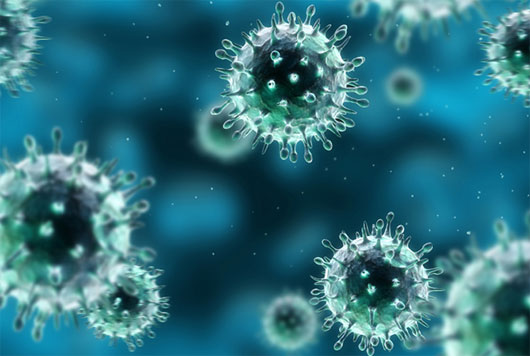Successfully created deadly flu virus in the laboratory
Scientists have created a 1918 Spanish flu-like strain, an "extremely dangerous" strain of flu that has killed 50 million people in history.
The experiment was considered crazy by some people, but US researchers behind the study shared that it was very useful in controlling the risks posed to the public by influenza viruses spreading among species. wild bird.
The team used a process called reverse genetics to examine the infamous flu strain of 1918.
New viruses are created by using fragments of flu strains in wild birds, then transformed to make it easily spread to other animals through the air.

A report published in the journal Cell Host and Microbe said the study shows that genetic components for such a pandemic exist in nature and can be combined to create a dead disaster. people.
But Lord May, the former director of scientific advising for the UK government, said the University of Wisconsin-Madison project was "extremely dangerous".
He told The Guardian: "The work they are doing is extremely crazy. The whole action is extremely dangerous! It is true that there are dangers, but it does not stem from the viruses present in the animals, it comes from the lab of those who have crazy ambitions. "
Meanwhile Professor Yoshihiro Kawaoka, the head of the project, argued that his work was aimed at saving people's lives.
"The worst case scenario is the emergence of a new bird virus that is highly pathogenic to humans, such as the H5N1 virus, and is capable of spreading between people and people like seasonal influenza viruses." Our findings demonstrate the value of constantly monitoring bird flu and the need to improve influenza vaccines and antiviral drugs in preparation for a similar scenario. "
- Successful early in blocking deadly flu virus
- Published the first study material on the new influenza virus
- WHO caucus about the most dangerous virus created by humans
- Detecting deadly virus in the bat
- America tried to successfully vaccinate against Zika virus in animals
- Afghanistan is confused with deadly viruses via mobile phones
- Artificial viruses are deadly and humans cannot resist if pandemics happen
- In the plethora of deadly epidemics, what is the most dangerous virus in history?
- The deadly venom bite is the dog tick
- How do some people get rid of Ebola?
- The new flu pandemic proves a controversial study
- Warning of the bat virus causing death
 Why do potatoes have eyes?
Why do potatoes have eyes? 'Tragedy' the world's largest carnivorous life: Death becomes ... public toilet
'Tragedy' the world's largest carnivorous life: Death becomes ... public toilet Tomatoes were once considered 'poisonous' for 200 years
Tomatoes were once considered 'poisonous' for 200 years Detecting microscopic parasites on human face
Detecting microscopic parasites on human face